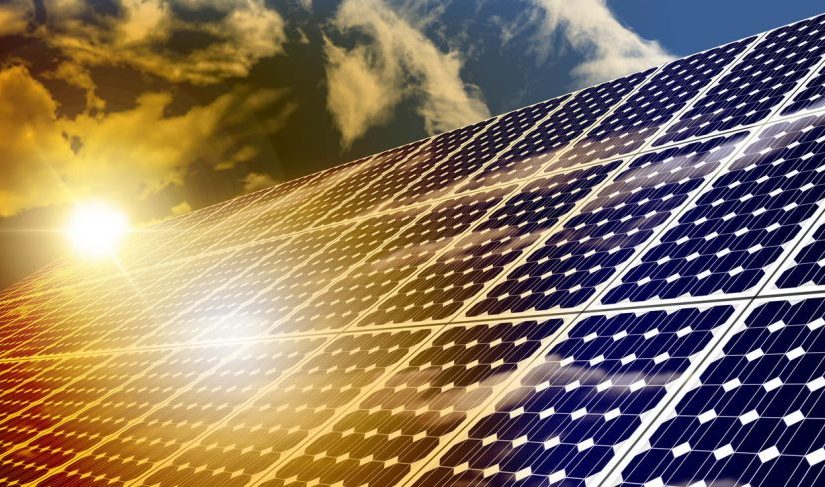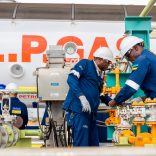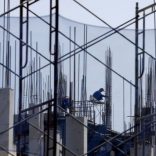Mozambique: MRM calls on tourists to stop buying illegal rubies - AIM
Mozambique: Private group to invest $110M in solar energy plant in Gaza province

FILE - For illustration purposes only. [File photo: CBS News]
A private Mozambican group plans to invest US$110 million (€101 million) in the installation of a solar power plant in Gaza province, southern Mozambique, according to information that Lusa had access to on Thursday.
According to the Chibuto Solar Power Plant Environmental Impact Study, the project will have an installed capacity of 95 MW, resulting from a partnership between Sal Energia and state-owned Elétrica de Mozambique (EDM), to “reinforce the capacity of the public grid”.
“Where Sal Energia will develop, finance and build the power plant and associated grid connection infrastructure,” reads the document, adding that the project will be set up on an area of 211 hectares, in the administrative post of Chibuto Sede.
It also involves the construction of a 275KV transmission line, about 10 kilometres long, between the solar plant and the Chibuto substation.
Lusa previously reported that electricity production through solar parks in Mozambique grew by 18.6% in 2024, but still guarantees less than 1% of the total.
According to the budget execution report with data from January to December 2024, electricity production in the country’s five large solar parks, and by other smaller plants, exceeded 101,247 MegaWatt-hours (MWh) in this period, compared to 85,343 MWh in the whole of 2023.
Last year, the government had set a target of producing 138,808 MWh through the country’s already operating solar parks, a goal that was not met.
Despite the growth in production, solar parks only accounted for 0.5% of Mozambique’s total production in 12 months, led in 2024 by hydroelectric plants, with 83.8%, and essentially the Cahora-Bassa Hydroelectric Plant (81.7% of total electricity production until December).
Mozambique plans to move ahead with solar power projects in at least five parts of the country by 2030, with an estimated capacity of 1,000 MW of electricity production, promising a “true solar revolution”.
“Accelerating these types of projects to a larger scale is the simplest way to solve Mozambique’s strategic dilemma after 2030: having to choose between green energy for export or supplying energy to industrial consumers,” according to the Energy Transition Strategy (ETS), a document reported by Lusa in 2024.
Mozambique previously had projects for 125 MW solar power plants, with 80 MW already connected to the grid.
The new strategy, which identifies investments of around US$80 billion (€76.5 billion) by 2050, foresees Mozambique developing, in a first phase, by 2030, ‘at least’ 1,000 MW of new solar photovoltaic capacity in Dondo, Lichinga, Manje, Cuamba, Zitundo and other locations ‘to be identified’, and 200 to 500 MW of new onshore wind power capacity, namely in Inhambane, Lagoa Pathi.
“Large industrial investors who need large amounts of green electricity should be encouraged, through a favourable business and regulatory environment, to develop large-scale solar and wind energy projects,” the document adds.
By 2050, the aim is to have at least 7.5 GW of solar photovoltaic capacity installed in Mozambique and up to 2.5 GW of wind power capacity.
“To ensure price optimisation and accelerate the expansion of solar and wind capacity, the government should build on Mozambique’s Renewable Energy Auction Programme,” the principles of which introduced “competition in the awarding of renewable energy contracts,” the document states.
“The rapid growth of solar expansion in South Africa following the introduction of auctions is a regional example to follow,” highlights the Energy Transition Strategy document, which also emphasises “long-term” initiatives.
“Continue to gradually develop the latest solar and wind generation potential to meet the growing demand for electricity. A real ‘solar revolution’ will be needed to meet Mozambique’s growing consumption in a clean way,” it also states.












Leave a Reply
Be the First to Comment!
You must be logged in to post a comment.
You must be logged in to post a comment.